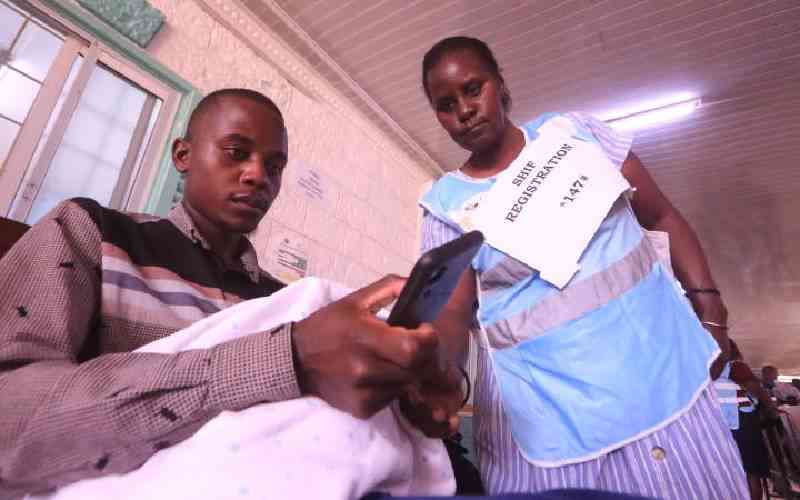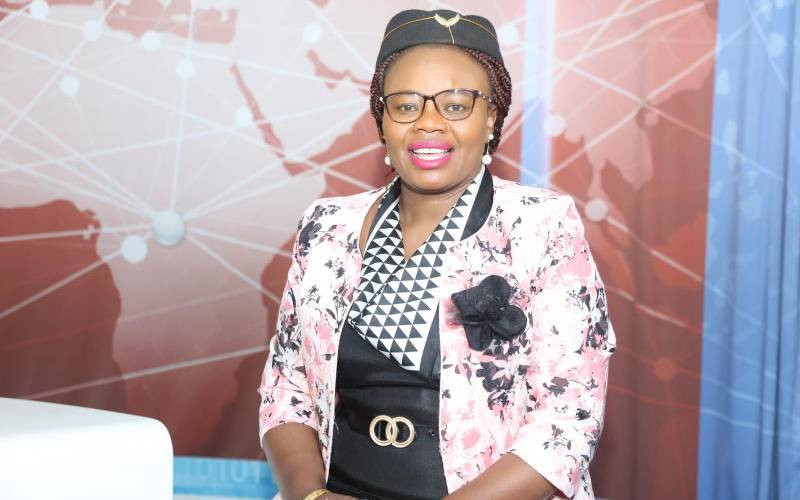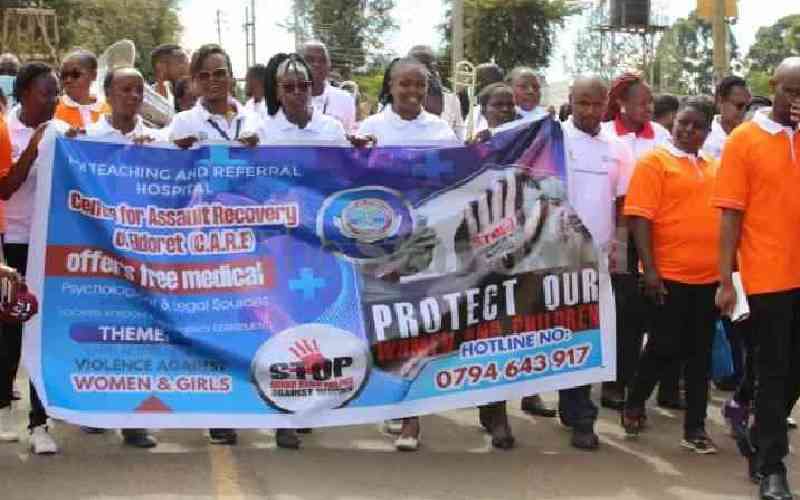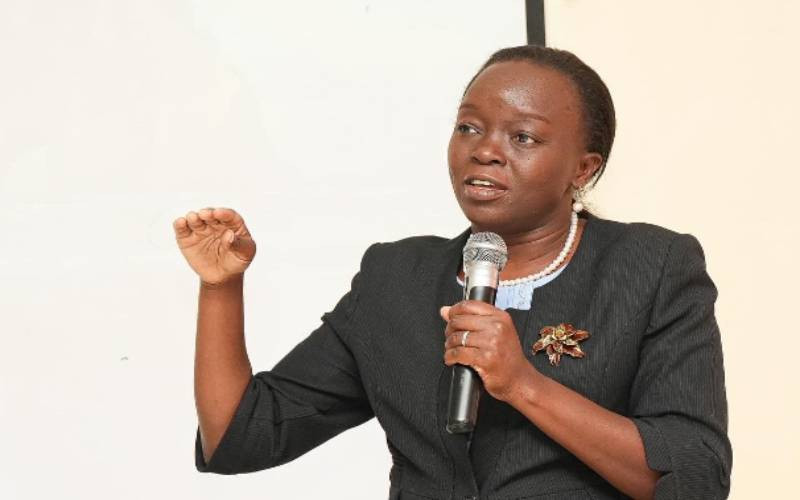
In African society, receiving a newborn baby is regarded as a source of blessings or a gift. But for Caxton Osozie, his birth took a different route.
"I was born in 1992, in one of the big hospitals in Vihiga County. My mother tells me she gave birth without any birth complications. Unfortunately, both Mum and Dad were shocked to learn that I looked different from my other siblings. My skin looked white which was scary to them," Caxton says.
He narrates that when his parents asked the midwives why his skin looked white, she told them not to worry as some newborns looked like that. His parents were not fully satisfied with what they were told. They went back home with a lot of questions. At the time, they had little knowledge about genetic disorders.
At home, Caxton's grandmother spotted his pale skin with shock. Instead of welcoming the newborn baby, his relatives rejected him saying that he was not from that family.
"She told my mother that I might have been sired by a 'mzungu' and that's why I looked white. I was equally rejected by close relatives, friends and neighbours. My mother saw a need to hide me from the family since even my life was at risk, " Caxton discloses. "My mother was my greatest support system. From Day One of birth and always tried to protect me from social stigma, " he says.
"One day, my parents took me to the hospital. This was around six months after I was born. My father was curious to understand why my skin looked white. Through observation and some tests, medics explained to both of them that I was born with a genetic condition known as albinism that has no cure but was absolutely manageable. They were also told that I was normal like any other child, " Caxton says.
"After my parents understood the condition I was born with, they reached out to my grandmother and explained everything," Caxton says.
"As far as some of my relatives knew, there was no history of albinism in our family so the news came as a shock to them. However, some of my uncles later told my parents that one of my late aunts had the disorder so it turns out my parents were carriers of the gene that causes albinism, " he says.
"When my grandmother finally understood albinism, I didn't face any more stigma from my family members," Caxton narrates.
"Like any other child, I was taken to school and life went on. I thought I will not face stigma any more but believe me, in my early years of school, still stigma was rife. I was called funny names such as 'mzungu' and others still say my mother slept with a European so the current father is not my blood father. Others would ask me if I got burnt, " Caxton says.
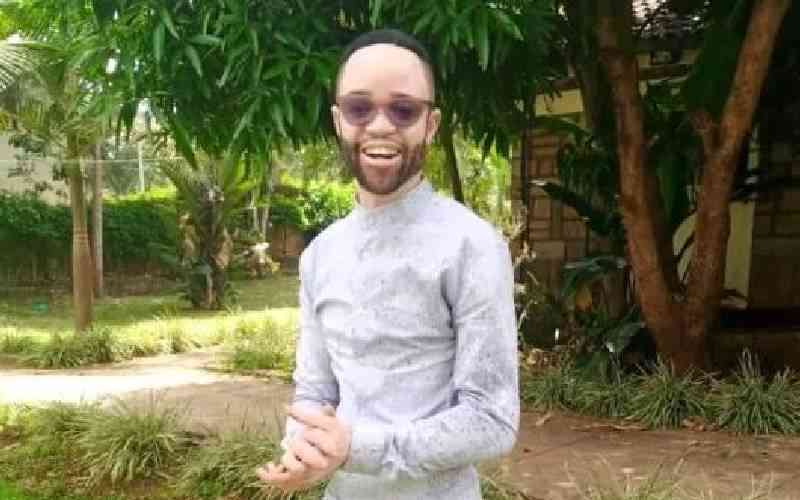
According to Dr Prabha Choksey, a Consultant Ophthalmologist and founder of Dr Choksey Albinism Foundation, albinism is a genetic condition present from birth and is characterised by the lack of melanin, a photo-protective pigment that plays a major role in absorbing ultraviolet radiation from the sun, in the skin, hair and eyes.
An estimated 3,000 people are living with albinism in Kenya, this is according to the Albinism Society Of Kenya ( ASK).
"Albinism is caused by mutations in specific genes that are responsible for melanin production. This gene is recessive, meaning that both parents must carry the gene for it to be passed on. Albinism is not a disease, but is a genetic condition that people are born with, " Dr Choksey explains.
"Lack of pigment in the skin and hair makes the persons with albinism appear light with blond hair, lack of pigment in the eyes makes them live with severe visual challenges and it's the major causes of disability and morbidity in them," Dr Choksey explains.
"The inclusion of Parvez - Aktar family in the book of World Records for being the most siblings with albinism in May 2021 brought into focus the fascinating science behind the condition, " says Dr Choksey.
"Oculocutaneous albinism is an autosomal recessive genetic condition meaning the child inherits the gene of albinism from both parents and there are three possibilities, first both parents have normal pigment but carry the gene of albinism. Here, there is a 25 per cent chance of having a child with Albinism," Dr Choksey explains.
"Secondly, one parent has albinism and the other is a carrier of the gene thus there is a 50 per cent chance of having a child with Albinism. Thirdly, when both parents have albinism as in the Parvez - Aktar family there is 100 per cent chance of having all children with albinism," she explains.
Caxton says he started developing low vision due to albinism while in school. He told his teachers about the issue but they took it lightly, saying he was just pretending. He later was identified by a school in Kilimani that referred him to Kikuyu Hospital. They carried out some tests and realised that he was indeed facing vision difficulties.
"Lack of pigment melanin in the eyes leads to reduced vision whose degree varies from one person to another. They could be myopic (short-sighted), hypermetropic (long-sighted) or have astigmatism which causes the images to appear unfocused, " explains Dr Choksey.
"At Kikuyu Hospital, I was given glasses that were meant to correct the eye condition. However, they didn't offer much help," Caxton says.
Back at school, Caxton didn't give up. When he was around eight years old, he kept telling his teachers he was facing vision problems but still they couldn't understand. This lowered Caxton's performance until a new headmaster was transferred to his school.

The new headmaster directed teachers to give special attention to him and some pupils who were calling him 'funny' names were warned to stop the habit and after some time, his performance improved.
In high school, life became difficult once again. Since people with albinism are advised to wear caps to reduce the risk of sunburn and skin cancer due to lack of melanin, Caxton asked the principal if he could wear one. Unfortunately, the principal said he couldn't as it would encourage other students to wear caps and this would create a bad image of the school.
"I had to stay in class while other students went outside to play. This was to avoid the effects of the sun's ultraviolet rays," Caxton says.
"I was also still experiencing vision problems and I tried to ask my teachers if they could allow me to sit at the front so that I could see the board better but they wouldn't listen. Back then, students sat in order of performance. Those who performed well sat in front and average ones, like me, sat in the middle, " Caxton says.
One day Isaac Mwaura, the core founder of the Albinism Society Of Kenya who was later nominated as a senator, came to Caxton's school to talk about Albinism.
"Once the teachers, principal and students learned more about albinism, I was allowed to wear a cap and got special attention from teachers. There was no single stigma from other students and within a short period, I started scoring good grades, " he recalls.
"Years went fast and I finished my secondary studies and joined college where I took a Diploma in Journalism and Mass Communication. My life in college started well and, within a period of three years, I graduated as a journalist. Out of college, I faced an event I'll never forget, " Caxton says.
"As any graduate who is hungry for a job, some people abducted me in the name of giving me one as a camera person in a certain organisation. I learned of their plan earlier and escaped just when they were planning to take me to Tanzania where horrific murders of people with albinism were taking place. The killers would harvest their body parts to use for their witchcraft beliefs. It was around 2008," he recalls.
"I was eager to get a job as a journalist. I tried my best to reach out to media houses for job opportunities but got no positive responses in spite of my qualifications and talent. I later came to learn that it was because of the way I looked. This made me shift my ambitions to becoming a voice-over artist, " Caxton says.
Caxton calls upon the government and all concerned stakeholders to address the challenges that various people with albinism face.
"Let us silence the stigma. It is very difficult for people with albinism to secure jobs. Let the government give us special attention. Society should learn that albinism is not a disease. It is a genetic disorder. We are just like other people, the difference is just that we lack melanin in our skin," he says.
"I encourage people with albinism to work hard, accept, adjust and move on to fight the stigma and discrimination. Whenever they face discrimination, they should take it positively. We have a place in society, we are not a burden," Caxton says.
 The Standard Group Plc is a multi-media organization with investments in media platforms spanning newspaper print
operations, television, radio broadcasting, digital and online services. The Standard Group is recognized as a
leading multi-media house in Kenya with a key influence in matters of national and international interest.
The Standard Group Plc is a multi-media organization with investments in media platforms spanning newspaper print
operations, television, radio broadcasting, digital and online services. The Standard Group is recognized as a
leading multi-media house in Kenya with a key influence in matters of national and international interest.

